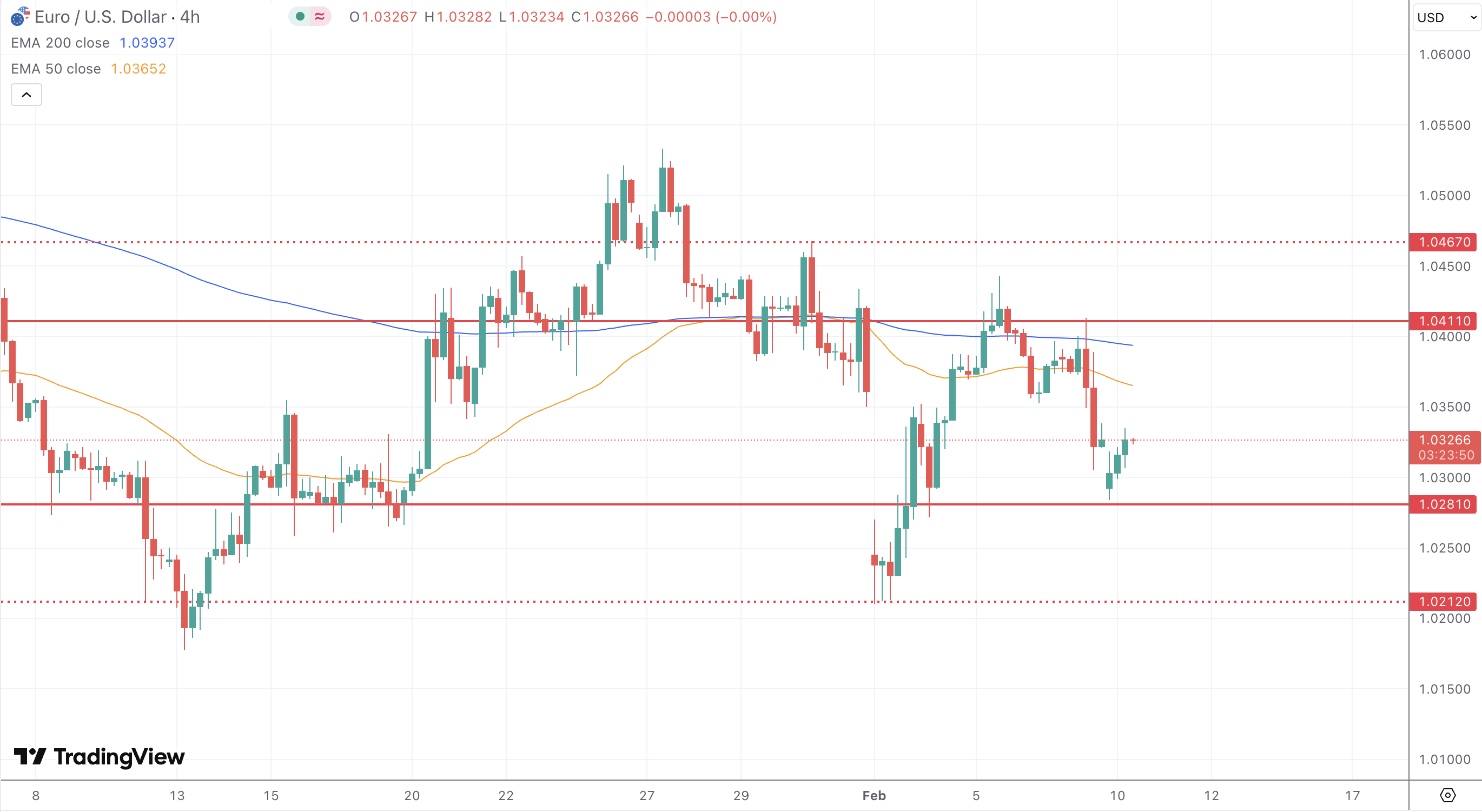Key Takeaways
- EUR/USD is trading near $1.0326, with key support at $1.0281 and resistance at $1.0411.
- Upcoming U.S. CPI data on February 12 is expected to show a 2.9% year-over-year increase; deviations from this expectation could influence Federal Reserve policy outlooks.
- Geopolitical factors, including trade tensions and tariff policies, remain significant drivers of EUR/USD fluctuations.
Market Dynamics and Recent Performance
The EUR/USD pair has recently experienced downward pressure, trading around $1.0326 as of February 10, 2025. This decline is attributed to a combination of factors, including weaker-than-expected U.S. employment data and ongoing geopolitical tensions. The U.S. Non-Farm Payrolls report revealed a gain of 143,000 jobs in January, falling short of the anticipated 169,000 and significantly lower than December’s 307,000 increase. Despite this, average hourly earnings rose by 0.5%, and the unemployment rate decreased to 4.0%, indicating a mixed outlook for the labor market.
Technical and Fundamental Influences
From a technical perspective, the EUR/USD is approaching a critical support level at $1.0281. A breach below this threshold could pave the way for further declines towards $1.0212. Conversely, resistance is observed at $1.0411 and subsequently at $1.0467. The 50-day and 200-day exponential moving averages (EMAs) are positioned at $1.0365 and $1.0393, respectively, suggesting overhead resistance that may challenge bullish momentum.
Fundamentally, market participants are closely monitoring the upcoming U.S. Consumer Price Index (CPI) report, scheduled for release on February 12. Analysts project a year-over-year CPI increase of 2.9%. An outcome exceeding expectations could bolster the U.S. dollar, while a lower-than-anticipated figure might intensify speculation regarding potential Federal Reserve rate cuts.
Looking Forward
The interplay between U.S. economic indicators and geopolitical developments will be pivotal for the EUR/USD trajectory in the coming week. The anticipated CPI data will offer insights into inflation trends, influencing Federal Reserve policy expectations and, by extension, the U.S. dollar’s strength. Additionally, ongoing trade tensions and policy decisions, particularly those related to tariffs, could further impact the pair’s movement.


